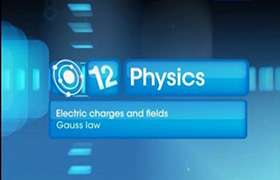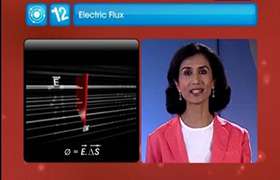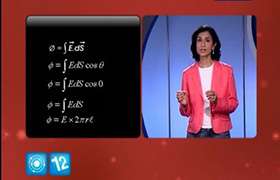CBSE Class 12-science Answered

(a)Electric field intensity at any point outside a uniformly charged spherical shell:
Consider a thin spherical shell of radius R and with centre O. Let charge + q be uniformly distributed over the surface of the shell.
Let P be any point on the Gaussian sphere S1 with centre O and radius r, as shown in the following figure.

According to Gauss's law, we can write the flux through ds as:

At any point on the surface of the shell, r = R

Field lines when charge density of the sphere is positive

Field lines when charge density of the sphere is negative

(b) Diameter of the sphere = 2.5 m
Radius of the sphere, ![]()
Charge density, ![]()
(i) Total charge, ![]()
(ii) Total electric flux, ![]()
Or
(a) The figure given below shows an electric dipole of charges +q and -q which are separated by distance 2a.

Expression for the torque: The above arrangement forms a couple. The couple exerts a torque which is given by,
![]() =Force x Perpendicular distance between the two forces
=Force x Perpendicular distance between the two forces
![]() =qE x 2a.sin
=qE x 2a.sin![]()
![]() =pE.sin
=pE.sin![]() , where p=qx2a=Dipole moment.
, where p=qx2a=Dipole moment.
Since the direction of torque is perpendicular to ![]() we can rewrite the above equation as,
we can rewrite the above equation as,
![]() =
= ![]()
(b) The work done will be equal to the potential energy of the system





